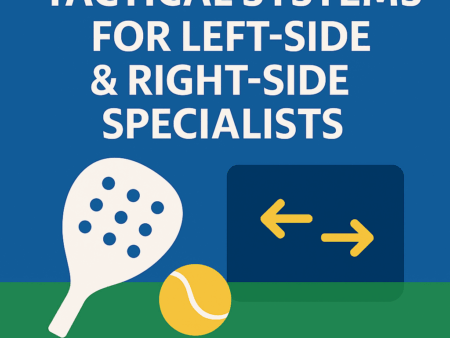Padel is a sport built on smart positioning, teamwork & understanding where to stand at the right time. Good positioning can win points even if your technique isn’t perfect. This guide breaks down the essential Padel court positions, what each one means & how to use them effectively.
1. The Net Position
The net is the strongest position in Padel. Teams that control the net usually control the point.
What it means
- Both players stand a step or two behind the net
- One covers the left side, one covers the right
- You use volleys, bandejas & smashes to dominate play
Why it’s powerful
- You take time away from opponents
- You can finish points quickly
- You create sharp angles
When to take the net
- After hitting a good serve
- After a deep return
- After a strong chiquita
- When opponents hit a weak lob
Net control wins matches — especially at intermediate & advanced levels.
2. The Defensive Backcourt Position
The backcourt is where rallies often start, especially after receiving a serve or losing the net.
What it means
- Players stand 1–2 meters in front of the back glass
- You use lobs, counterattacks & wall shots
- Positioning must stay compact with your partner
Why it matters
- Allows time to defend
- Lets you use the glass effectively
- Reduces errors under pressure
Key defensive rules
- Don’t stand too close to the glass
- Don’t swing wildly at fast balls
- Use the walls when needed
- Always look for a chance to lob & recover the net
The backcourt is about patience, not panic.
3. The Transition Zone (The “No Man’s Land”)
This is the area between the backcourt & the net — and it’s the most dangerous place to stand.
Where it is
- Around the service line
- In the middle of the court
Why it’s risky
- Balls bounce awkwardly there
- Opponents can attack your feet
- You get caught between offensive & defensive shots
When you’ll be in it
You must pass through this zone during transitions, but:
⚠️ Never stay here longer than necessary.
Move through it quickly — forward or backward.
4. Proper Side-by-Side Team Positioning
Padel is doubles, so you & your partner must move as a unit.
Basic rule
Move in parallel, like you’re connected by a string.
Why
- You cover the entire court
- You avoid leaving large open spaces
- You reduce confusion on balls down the middle
Common mistakes
- One player moving forward while the other stays back
- Standing too far apart
- Not communicating on middle balls
Stay tight, stay coordinated.
5. The Left-Side & Right-Side Roles
Each player usually sticks to one side of the court.
Left side
- More smashes
- More overheads
- More aggressive play
- Usually for stronger players or attackers
Right side
- More lobs
- More chiquitas
- More defensive play
- Usually for consistent & strategic players
Pick a side that suits your strengths — and stick to it.
6. Recovering Position After Each Shot
Many beginners hit the ball then stand still.
This is a huge mistake.
Correct approach
- Hit
- Recover
- Reposition
- Prepare
Good players return to optimal position before the opponent hits their shot.
7. Using Angles & Court Geometry
Smart positioning means using the court wisely.
Offensive angles
- Volleys into corners
- Smashes toward side walls
- Chiquitas down the middle
Defensive angles
- Wall shots to reset
- Lobs to push opponents back
- Deep balls to regain the net
Understanding angles makes Padel much easier.
8. When to Move Forward
Move forward when:
- You hit a deep ball
- You force a weak opponent shot
- You hit a well-placed chiquita
- You push opponents behind the baseline
Forward movement should always be intentional — not random.
9. When to Move Backward
Move back when:
- Opponents hit a strong lob
- You lose the net
- You’re off-balance after a tough volley
- You need space to defend with the wall
Backing up is part of smart defense, not a sign of weakness.
10. Quick Summary: The Three Core Zones
| Zone | Purpose | Best Shots |
|---|---|---|
| Net | Attack & dominate | Volleys, bandejas, víboras, smashes |
| Backcourt | Defend & reset | Lobs, wall shots, chiquitas |
| Transition Zone | Move through only | Quick defense or approach shots |
Mastering these zones is the key to understanding Padel strategy.


